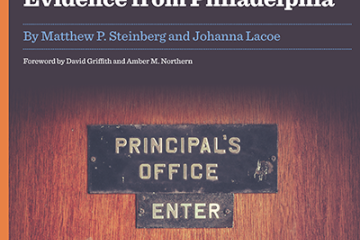Study after study has found that new teachers tend to be less effective than educators with more experience. But despite having more junior staff, charter networks (referred to as CMOs) often outperform their district peers. So what’s their secret?
To find out, this study explores how teacher effectiveness varies and evolves across traditional and charter public schools, as well as within the sector’s CMOs and standalone schools.
Using data collected by the Pennsylvania Department of Education between 2007 and 2017, George Mason University associate professor Matthew Steinberg and University of Pennsylvania doctoral student Haisheng Yang examine the impact that over 40,000 teachers in charter and traditional public schools had on students’ math and English language arts (ELA) achievement in grades three through eight.
Among the report’s key findings:
- On average, teachers in Pennsylvania charter schools are more effective in ELA but less effective in math than teachers in traditional public schools. However, teachers in CMO-run schools are more effective in both subjects.
- On average, teachers in Pennsylvania’s CMOs improve more rapidly than teachers in traditional public schools or standalone charters—especially when teaching math.
- Unlike Pennsylvania’s traditional public schools, the state’s CMOs promote many of their most effective teachers into leadership roles.
As the authors note, these findings suggest that Pennsylvania’s CMOs are succeeding with “a fundamentally different approach to human capital,” which relies heavily on their ability to help novice teachers improve more quickly than their counterparts in traditional public schools. But of course, it’s critical that schools in both sectors do what they can to help new teachers get better faster.
In short, accelerating teacher improvement is yet another area where all schools could learn from the success of our nation’s most effective charter school networks.




